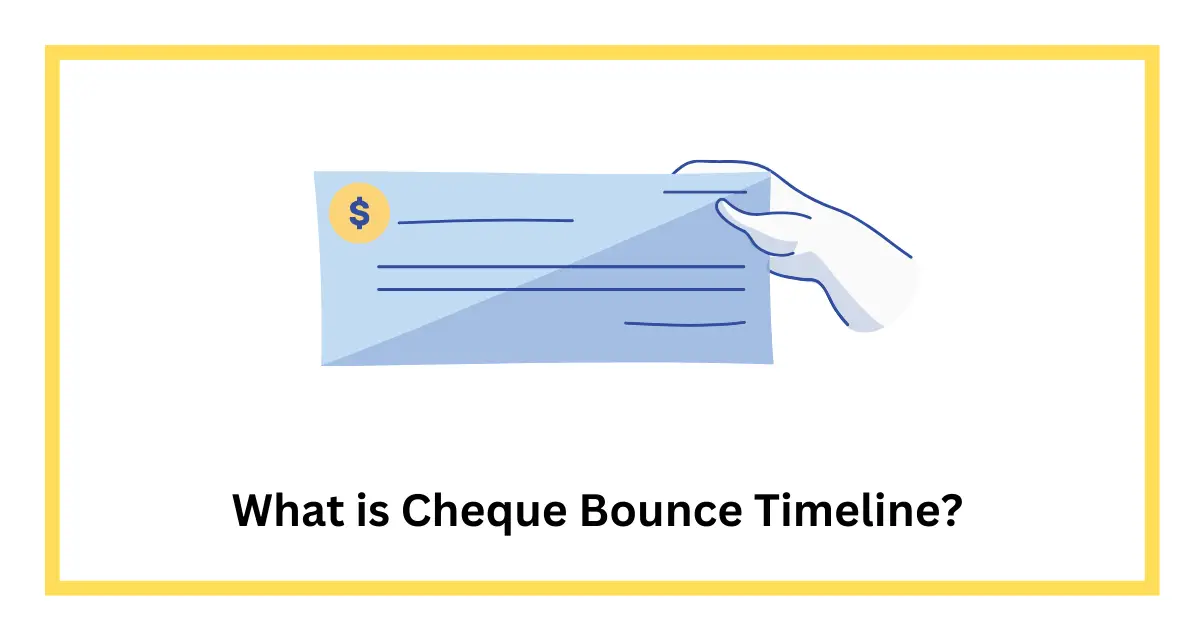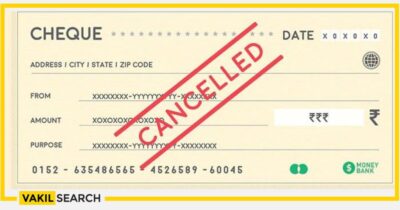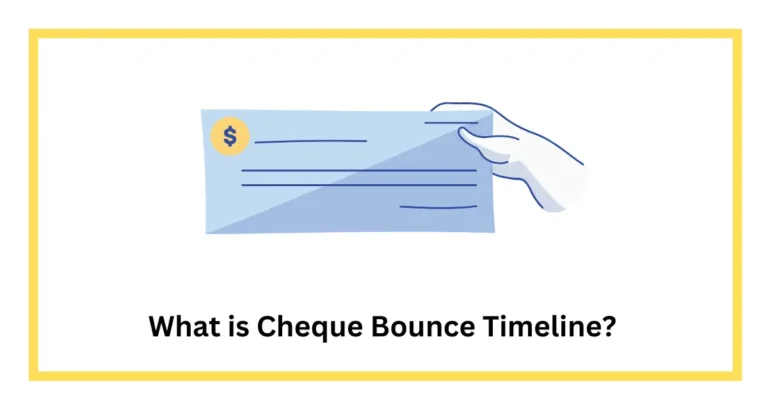This article briefly discusses the timeline of a bounce back cheque is that you can be aware of the severe consequences of a cheque bounce.
A cheque is commonly used in India as a bill of exchange that is payable on demand. The person who issues and writes the cheque is called the drawer and the person who receives the cheque and in whose name the cheque is drawn is called the drawee. You need to deposit the cheque in the payee’s bank account. Below we can have a look at the Punishment for Cheque Bounce.
If you submit the cheque at the bank, and you get the accurate amount from the bank, the cheque is regarded as honored. However, if the bank cannot pay the required amount stated in the cheque to the payee, the cheque is then dishonored.
Section 138 of the Negotiable Instruments Act states that a bounce back cheque due to insufficient balance in the bank, if there is a discrepancy in the signature, etc.
Cheque bounce is a criminal offense in India and you could get imprisoned for up to 2 years and would need to pay twice the amount stated in the dishonored cheque.
Moreover, in Section 143A, it is quite clear that interim compensation can be given to the complainant for the issues caused due to the .
Punishment for Cheque Bounce Timeline
- In bounce back cheque the first step is taken by the drawee’s bank which notifies the payee by issuing a cheque return memo listing the causes behind the bounce back cheque. The bank sends the dishonored cheque and the memo to the payee.
- The payee is allowed to return the cheque in three months from the date written on the cheque. Firstly, the payee has to issue a notice to the issuer or drawer thirty days after receiving the cheque bounce notice.
- Secondly, the payee has to state clearly in the notice that the stipulated amount must be paid to them 15 days after receiving the receipt of the notice. However, if the drawer fails to adhere to these conditions and does not give back the money in 30 days, the payee has the right to issue a criminal complaint against the drawer.
- If you are too late in filing the complaint, however, your check bounce case won’t be given any attention in court if your limitation period is over. They will only review the case if you can prove that you had a valid cause for the delay.
- The court will send summons to the drawer and if they are found guilty, they might be sentenced to 2 years in prison or made to pay twice the initial amount to the payee.
- The drawer can also appeal in the Sessions Court within thirty days of the order of the Lower Court. The drawer also has the additional option of filing a cheque bounce case under section 420 of the Indian Penal Code for cheating. You also have to know about the Punishment for Cheque Bounce.
Exemptions for Bounce Back Notice
If a cheque is drawn in the name of a charitable trust as an application amount or a donation won’t get dishonored.
In some cases, when there are some minor changes or corrections in the cheque, it might not get bounced as the banks can excuse small mistakes. However, the banks might make you pay some penalty for the corrections on the cheque.
Things to Consider for Validity of Cheque
-
Date of the Cheque:
The date on the cheque is fundamental. A post-dated cheque, i.e., a cheque with a future date, is not valid for immediate payment. The payee cannot encash it until the specified date arrives.
-
Amount in Words and Figures:
Discrepancies between the amount mentioned in words and figures can lead to cheque dishonor. Both representations of the amount should match to avoid any ambiguity.
-
Signature of the Drawer:
A cheque must bear the authentic signature of the drawer. Any variance or absence of a valid signature may render the cheque invalid.
-
Account Number and IFSC Code:
The cheque should include the correct account number and IFSC code. Incorrect details may lead to complications during the clearing process.
-
Crossing and Endorsement:
Crossing a Punishment for Cheque Bounce by drawing two parallel lines and adding “Account Payee” restricts its negotiation, providing added security. Additionally, endorsement, if required, should be executed properly.
-
Stale Cheque:
Punishment for Cheque Bounce gets stale after a certain period, typically three months. Banks may refuse to honor stale cheques, and a new cheque may need to be issued.
-
Drawer’s Balance:
Sufficient funds must be available in the drawer’s account to cover the cheque amount. A Punishment for Cheque Bounce issued without an adequate balance is likely to bounce.
-
Correct Payee Information:
The payee’s details on the cheque must be accurate. Any discrepancy may result in the cheque being dishonored.
Conclusion
Bounced back cheque is quite a common occurrence in India since there aren’t strict Punishment for Cheque bounce despite there being comprehensive laws about it. Everyone should try their best to avoid getting into legal trouble because of cheque bounce or dishonoring of the cheque by the bank as it’s a waste of time and money. If you are facing legal trouble due to a bounce back case, you should trust a Vakilsearch cheque bounce case lawyer to help you.
FAQs on Punishment for Cheque Bounce
How long does it usually take for the legal process to commence after filing a complaint for a cheque bounce?
The legal process for a cheque bounce typically begins with the filing of a complaint. The duration for legal proceedings varies, but it generally commences promptly after the complaint is lodged. Courts aim to expedite bounce back cases to ensure swift resolution.
What are the consequences for the issuer of a bounced cheque, and when do these consequences come into effect?
The consequences for the issuer of a bounced cheque include legal repercussions, fines, and potential imprisonment. These consequences come into effect once the cheque is dishonored, and the payee initiates legal action by filing a complaint.
Can a bounce back case be resolved through negotiations between the parties involved, and if so, how long does this process typically take?
Yes, a bounce back cheque case can be resolved through negotiations between the parties. Many cases are settled through mutual agreement before reaching the courtroom. The duration of this negotiation process varies based on the willingness of both parties to reach a resolution.
Is there a statutory time limit within which a bounce back cheque case must be resolved in court?
While there isn't a fixed statutory time limit for resolving a cheque bounce case, the legal system aims for expeditious resolution. Factors such as case complexity, court workload, and the cooperation of involved parties influence the timeline.
What are the potential delays that can occur in the bounce back cheque resolution process?
Several factors can cause delays in the bounce back cheque resolution process. These may include legal complexities, procedural hurdles, unavailability of key parties or documents, and the backlog of cases in the judicial system. Effective legal representation and adherence to procedural requirements can help minimize delays.
Read More:









